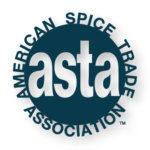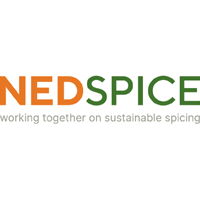 The FSMA Preventive Controls for Human Foods (PCHF) is one of the seven major rules of FSMA and likely the most impactful for the spice industry. This rule represents a major shift in moving towards a preventative food safety system. Preventive controls are steps that a domestic or foreign food facility must take to reduce or eliminate identified food safety hazards (including biological hazards such as Salmonella, physical hazards such as metal, and chemical hazards such as pesticides). The PCHF rule requires all food facilities have a food safety plan in place that includes an analysis of hazards and risk-based preventive controls to minimize or prevent the identified hazards.
The FSMA Preventive Controls for Human Foods (PCHF) is one of the seven major rules of FSMA and likely the most impactful for the spice industry. This rule represents a major shift in moving towards a preventative food safety system. Preventive controls are steps that a domestic or foreign food facility must take to reduce or eliminate identified food safety hazards (including biological hazards such as Salmonella, physical hazards such as metal, and chemical hazards such as pesticides). The PCHF rule requires all food facilities have a food safety plan in place that includes an analysis of hazards and risk-based preventive controls to minimize or prevent the identified hazards.
This rule also updated the current Good Manufacturing Practices (cGMPs) requirements. The PCHF retained existing cGMPs related to the personnel, plant and grounds, sanitary operations, sanitary facility control, equipment and utensils, processes and controls, warehousing and distribution, and defect action levels. PCHF also established new requirements pertaining to training requirements, allergen cross-contact controls, and human food byproducts used for animal food.
FDA Resources and Regulations |
ASTA Resources |
| FDA Webpage on Preventive Controls for Human Food The PCHF rule establishes requirements for verification, monitoring and developing corrective actions, as well as guidance for industry. |
Webinar on FSMA Preventive Controls for Human Food Final Rule This ASTA webinar provides the basics of the PCHF Final rule, presented by Hogan Lovells. |
| Final Rule on Preventive Controls for Human Food The text of the final rule, and specifically the preamble, provide valuable guidance and background to industry on FDA’s reasoning. |
ASTA Risk Assessment Guidance This ASTA Guide provides an overview of the risks that companies need to assess and includes sections on evaluating risks throughout the supply chain. |
| Code of Federal Regulations Chapter 21 Section 117 The final regulations for the PCHF rule. |
Validation Resources Spice companies are required to validate pathogen reduction processes used to control Salmonella. |
| Draft Guidance for Industry: Hazard Analysis and Risk-Based Preventive Controls for Human Food This guidance provides FDA’s current thinking and guidance on the PCHF rule. Chapters are added as FDA completes the guidance. |
ASTA HAACP Guidance The ASTA HACCP Guide to Spices and Seasonings is an analytical tool that enables management to introduce and maintain a cost-effective, ongoing food safety program. |
| ASTA cGMP Guidance This guide was updated in 2016 to reflect U.S. regulations and issues specific to exporting to the U.S. Use of this GAP Guide will assist those in the spice supply chain in understanding their responsibilities to provide clean, safe spice to consumers. |
|
| Ready to Eat FAQ ASTA has produced these FAQs in order to help members understand FDA’s current thinking on RTE foods in the absence of FDA guidance. |
|
Food Facility Registration |
|
| FDA inspects both domestic and international facilities that are required to register as food facilities. FSMA requires re-registration of covered food facilities, which are required to register with the FDA biannually in even numbered years. Under FSMA, facilities must also submit additional registration information to FDA, including an assurance that FDA will be permitted to inspect the facility. Additionally, the registration gives the FDA authority to suspend the registration of a food facility in certain circumstances. | |
Inspection and ComplianceThe following documents are tools that companies may find helpful in preparing a facility to comply with the PCHF rule and therefore a FSMA inspection. |
|
| Appendix 1 The appendix to the PCHF Guidance includes potential hazards for foods and processes, including potential biological, chemical, and physical hazards. Appendix 1 is NOT a checklist for inspections, but is intended to provide guidance on the type of information that FDA inspectors are looking to see in a food safety plan that will be scrutinized during an inspection. |
|
| FDA Investigations Operations Manual (IOM) IOM provides information for what an FDA inspection can entail and provides information on what processes and information an FDA inspector uses. The IOM also includes information on inspection policies on sampling, photography, imports, and more. |
|





